How to Accurately Measure for a Knee Brace
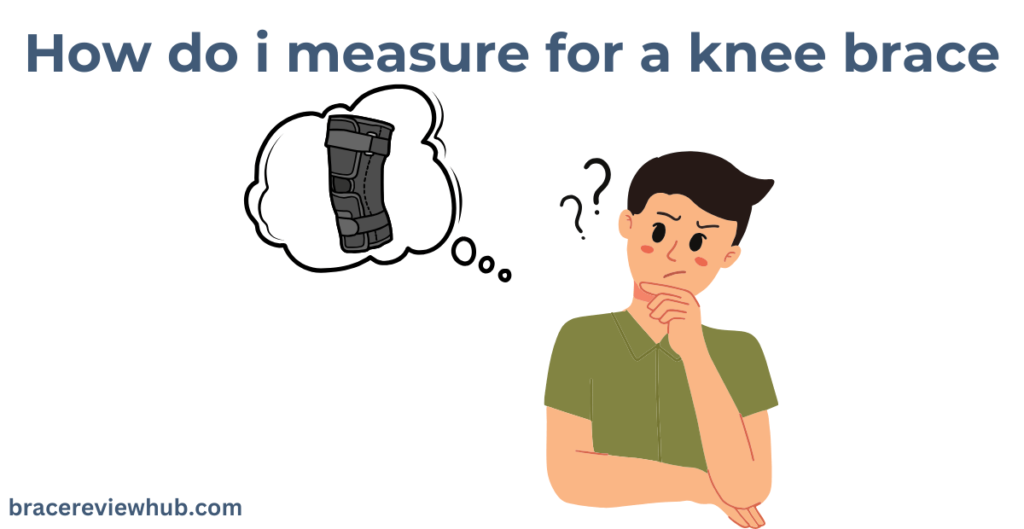
I know what you are looking for. You want clear, simple steps on how to measure for a knee brace so you can feel secure and supported right away. Here’s the best part: measuring for a knee brace does not require any special skills, just a bit of focus and the right tools!
Taking proper measurements of your knee, thigh, and calf is essential to ensure the brace fits snugly and provides maximum stability. With just a soft measuring tape and a few quick steps, you’ll be on your way to finding a brace that truly supports you.
Let’s go through each step to make sure your brace gives you the comfort and protection you need.
Why Accurate Measurement Matters
When it comes to choosing a knee brace, accuracy in measuring makes all the difference. By taking just a few moments to measure your knee, thigh, and calf properly, You’re creating a great opportunity for an awesome experience with your brace! And don’t worry—this is not a time-consuming process.
All you need is the tools for measurement. Ensuring each measurement is snug but not tight is key, and by getting each area right, you are ensuring the brace will offer the right level of stability, whether you’re dealing with a meniscus tear or looking to prevent strain in your daily activities.
So, why not take a little time to measure accurately? It will pay off! You’ll feel the difference in comfort, support, and peace of mind, knowing your brace is doing its job right. Ready to get started? Let’s jump into those easy steps!
Step-by-Step Guide on How to Measure for a Knee Brace
Let’s dive into how to measure for a knee brace, step by step, to make sure you get the perfect fit. Taking accurate measurements is key to finding a brace that truly supports your knee and feels comfortable during movement. Here’s exactly how to measure each part:
Step 1: Measure Around Your Thigh (6 Inches Above the Knee)
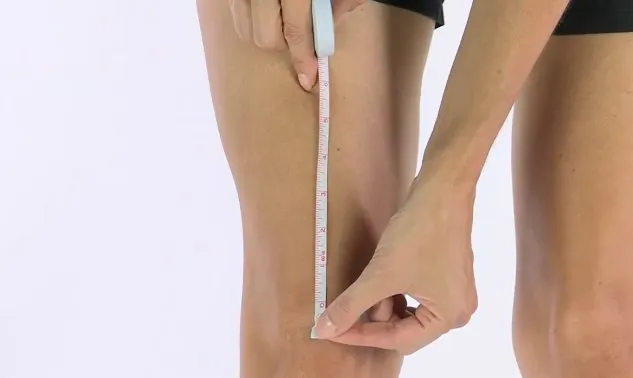
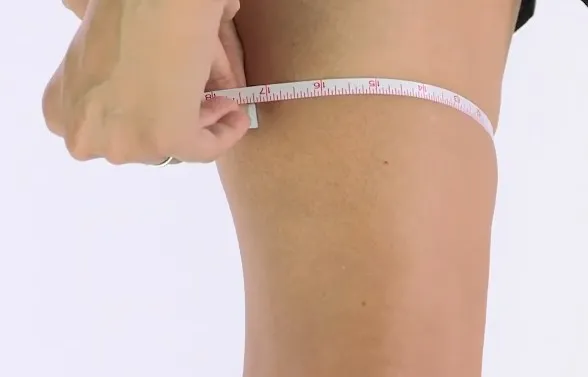
Start by locating a point about 6 inches above the center of your kneecap. This is the area where the top of the brace will sit, so it’s essential to get an accurate measurement here. Wrap the flexible tape measure around your thigh at this spot, making sure it’s level and flat against your skin. The tape should be snug but not tight—you don’t want it to dig in or feel uncomfortable. Write down this measurement.
Step 2: Measuring Around Your Knee

Next, measure around the center of your knee. This measurement is crucial as it directly affects how the brace will fit over the kneecap and provide stabilization. Stand naturally without bending your knee and wrap the tape around its largest circumference. Accurate measurement here ensures the brace will not shift during movement.
Step 3: Measuring Your Calf
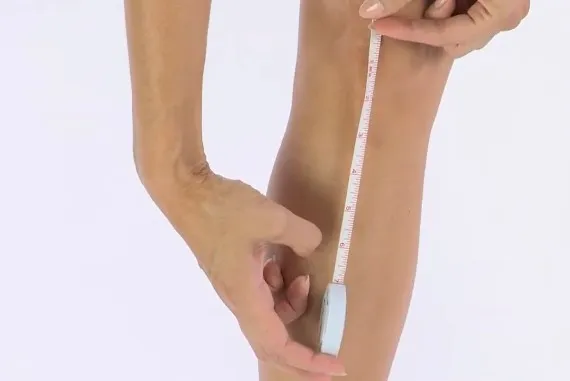
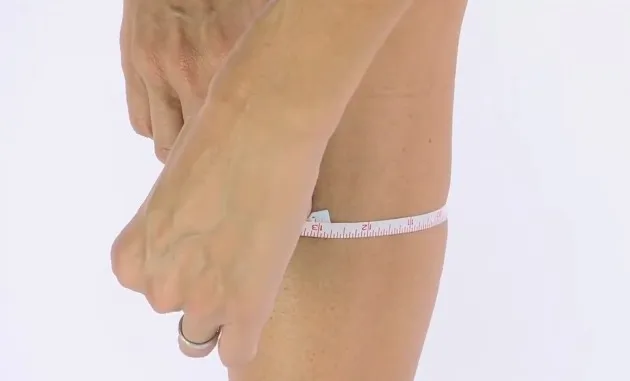
Finally, measure your calf 6 inches below the kneecap. This lower measurement ensures the bottom of the brace won’t slide down during use. Like the previous steps, keep the tape snug and parallel to the floor for consistency. Record the measurement immediately to avoid mix-ups with your thigh and knee numbers.
Knee Brace Size Chart
Now that you know how to measure for a knee brace and have written down your measurement numbers, you can use a knee brace measurement chart to find the right size. For this guide, we based our chart on sizing information from Enovis to help you find the perfect knee brace fit.

Convert Inches to Centimeters
Understanding Your Measurements
With your measurements in hand, the next step is to interpret them accurately. Most knee brace manufacturers provide a sizing chart that correlates measurements to brace sizes. It’s crucial to refer to the specific brand’s chart you’re considering, as sizing can vary.
Matching your numbers to the sizing chart ensures you select the right size for your body. A perfectly fitted brace will feel snug without pinching or restricting blood flow, staying securely in place as you move.
Common Mistakes to Avoid
When measuring, avoid common pitfalls that can skew your results. One typical error is pulling the tape too tightly, which can lead to a smaller measurement than your actual size. Ensure the tape is snug but not stretched to maintain accuracy.
Another mistake is measuring over clothing. Always measure directly against the skin to obtain true measurements. Also, consider your posture; measuring while standing can yield different results compared to sitting, so choose a consistent position.
Tips for Double-Checking Your Measurements
Accurate measurements require re-evaluation. Don’t hesitate to double-check your numbers to confirm their accuracy. Re-measure each section of your leg, ensuring consistency with your initial figures.
If possible, ask someone else to take your measurements. Having a second person involved can provide a different perspective and ensure the tape is level and snug in all the right places, preventing skewed results.
Conclusion
Knowing how to measure for a knee brace is a vital step in your recovery process. By ensuring a snug yet comfortable fit, you’ll have the stability and support needed to heal efficiently without added discomfort. Follow these steps, and consider reaching out to professionals if you have doubts. Remember, proper measurement today can prevent a world of inconvenience tomorrow.
FAQs
How tight should a knee brace be?
A knee brace should be snug but not so tight that it restricts blood flow or causes discomfort. You should feel supported without any pinching or numbness. If it leaves deep red marks or causes pain, it’s probably too tight. Make sure to adjust it so you can move comfortably while still getting support.
How do I know what size knee brace to get?
To choose the right knee brace size, you will need to know how to measure for a knee brace, like the circumference of your knee, thigh, and calf. Most brands offer a sizing chart, so after taking your measurements, match them to the chart to find the best fit.
How do I measure my knee?
To measure your knee accurately, wrap a measuring tape around the center of your knee (over the kneecap) while your leg is slightly bent. This gives you the knee circumference, which is key for finding a well-fitting brace. For more precise fitting, some measurements also include your thigh and calf.
How do I adjust a knee brace?
Adjusting a knee brace typically involves tightening or loosening straps until it feels comfortable and secure. Start with a snug fit and check that it isn’t causing discomfort or limiting movement. Many knee braces have Velcro or adjustable closures, allowing you to fine-tune the fit for different activities.




